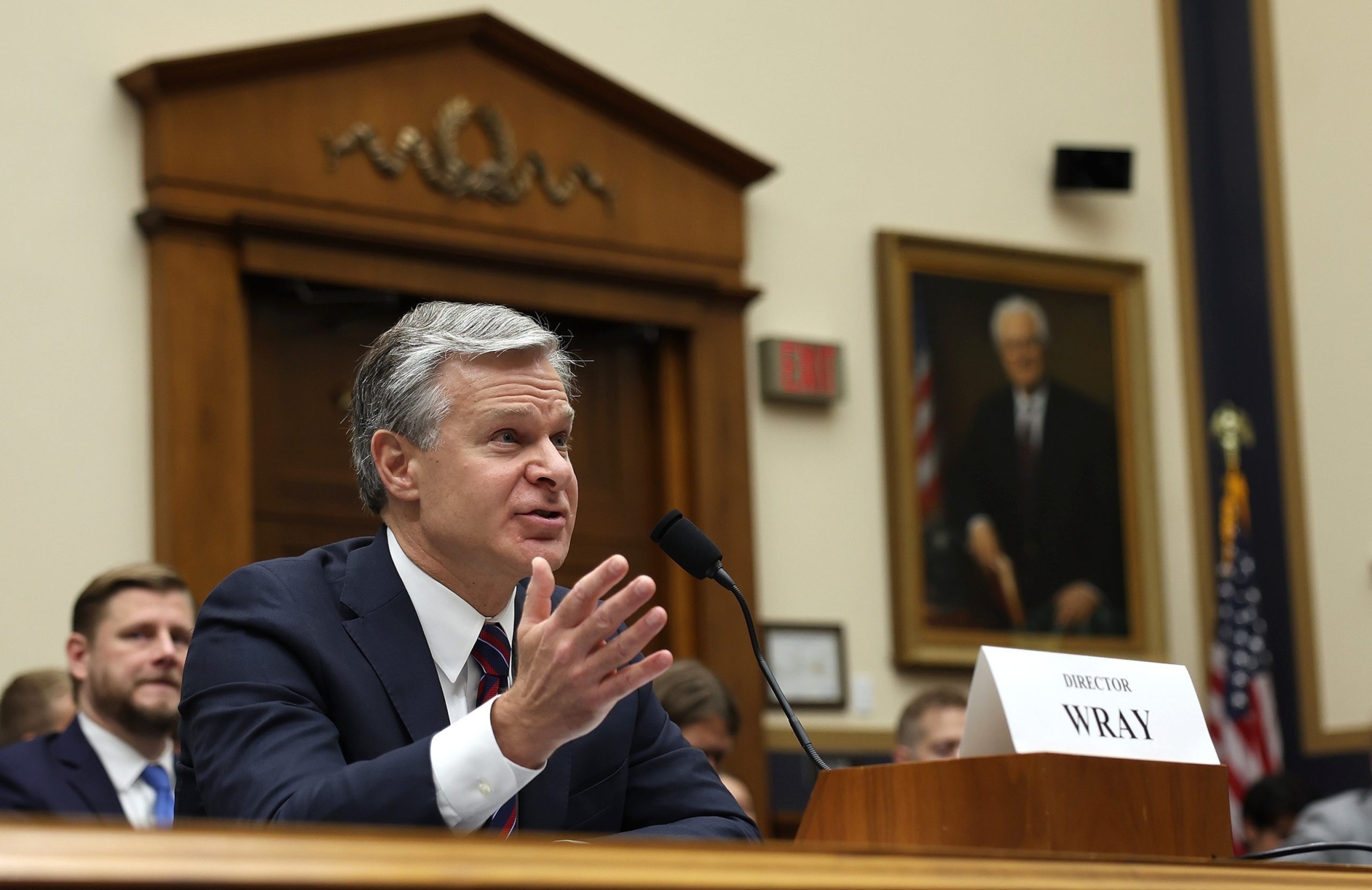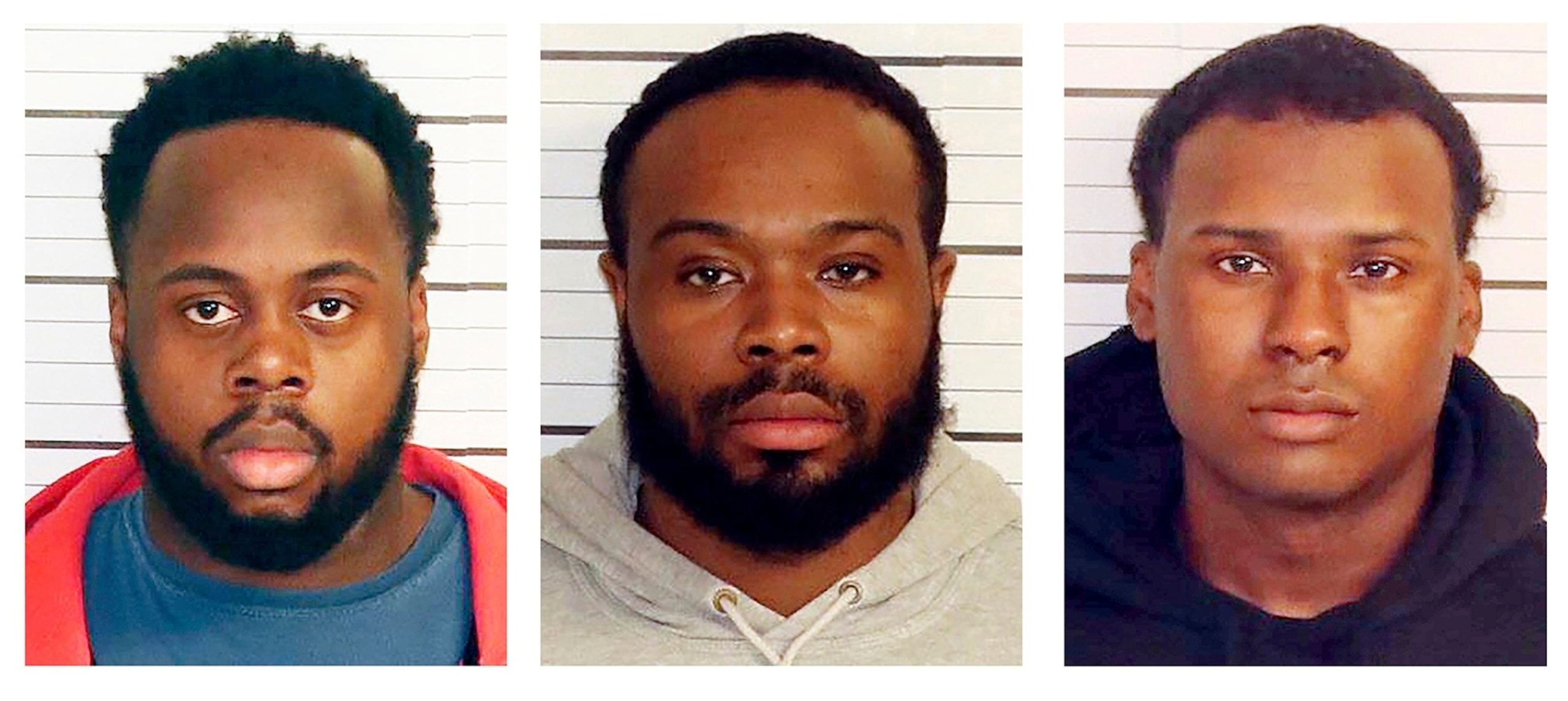A week before Thomas Matthew Crooks opened fire on former President Donald Trump in Butler, Pennsylvania, he became “very focused” on Trump and the rally, FBI Director Christopher Wray testified before the House Judiciary Committee on Wednesday.
Crooks also searched for information on the assassination of President John F. Kennedy in 1963, he said.
Wray told Congress in the last few days the FBI has been able to analyze a laptop connected to Crooks.
“On July 6, he did a Google search for quote, ‘how far away was Oswald from Kennedy?’ So that’s a search that’s obviously significant in terms of his state of mind,” Wray said.
He added that Crooks had pictures of public figures on his phone, but had “no rhyme or reason” to their methodology.
The FBI director said there is no apparent motive yet for the July 13 assassination attempt.
“We’re hoping to learn more, and we’re still exploiting a number of digital devices,” Wray said.

FBI Director Christopher Wray testifies before the House Judiciary Committee in the Rayburn House Office Building in Washington, DC, July 24, 2024.
Justin Sullivan/Getty Images
Crooks went to the site a week before the assassination attempt, he also said.
“He traveled to the grounds, I think, a week before, he spent roughly 20 minutes there,” he said. “Then he went to grounds again on the morning of the event, it appears, for about 17 minutes.” Crooks went to the site a third time “for good.”
Crooks flew a drone about 200 yards from the rally venue and had it up in the air for about 11 minutes, he testified.
“We have recovered a drone that the shooter appears to have used,” Wray said, adding the drone was recovered in the shooter’s vehicle.
“It appears that around 3:50 p.m., 4 o’clock, in that window, on the day of shooting, that the shooter was flying the drone around the area,” he said.
“Let me be clear about the area, not over the stage, and that part of the area itself, but I would say about 200 yards, give or take away,” he said.

FBI Director Christopher Wray arrives for the House Judiciary Committee hearing titled “Oversight of the Federal Bureau of Investigation,” in the Rayburn building in Washington, DC, July 24, 2024.
Tom Williams/CQ-Roll Call, Inc via Getty Images
Wray said it appears the shooter was a “loner” and didn’t have a lot of contacts in his cell phone.
“A lot of people describe him as a loner … that does kind of fit with what we’re seeing in his devices. You know, his list of contacts, for example, is very short, compared to what you would normally see from most people … there doesn’t appear to be a whole lot of interaction between him, you know, face to face or digital, with a lot of people,” Wray said.
The FBI has conducted over 400 interviews with “many more to conduct,” he said.
Border threat
In addition to questions about the assassination attempt against Trump, the FBI director was asked about the threat emanating from the southern U.S. border.
Over the past five or six years, the number of known or suspected terrorists encountered along the southern border “has increased,” and “that should be of concern,” Wray testified.
He also said that it doesn’t take a lot of foreign terrorists to be a “real problem.”
“I am increasingly concerned that foreign terrorists could seek to exploit vulnerabilities at our Southwest border or at other ports of entry or in other aspects of our immigration system to facilitate an attack here in the United States. I think that is something we have to be concerned about,” he said.
Election threats
Wray also said the Russians are continuing attempts to “influence” and “in various ways interfere with our democracy.”
“In fact, just in the last few weeks, we announced a significant disruption of a generative AI, enhanced social media and a bot farm, essentially of the Russians that was designed, designed to be an influence operation, and some of the fake, fictitious profiles of those bots purported to be US persons, so they’re still at it,” Wray said.
FBI Director Christopher Wray recently revealed that the man who attempted to assassinate former President Donald Trump had extensively researched details about the assassination of President John F. Kennedy. This shocking revelation has raised concerns about the potential influence of conspiracy theories on individuals who may be prone to violence.
The would-be assassin, identified as 37-year-old James Smith, was arrested by Secret Service agents before he could carry out his plan to kill Trump during a rally in Dallas. During the investigation, it was discovered that Smith had been researching various conspiracy theories related to the Kennedy assassination, including the infamous “grassy knoll” theory and allegations of a government cover-up.
This revelation has reignited discussions about the impact of conspiracy theories on individuals who may already be predisposed to violence. The FBI has long warned about the dangers of conspiracy theories, noting that they can fuel extremist ideologies and lead to violent acts. In recent years, there has been a rise in conspiracy theories related to political figures, leading to increased security concerns for public officials.
It is important to note that not everyone who believes in conspiracy theories will resort to violence. However, the FBI has emphasized the need for vigilance and awareness when it comes to individuals who may be influenced by extremist ideologies. In the case of James Smith, his obsession with the Kennedy assassination and his desire to emulate past assassins raises red flags about his potential for violence.
In response to this incident, law enforcement agencies are working to better understand the motivations behind individuals who are drawn to conspiracy theories and extremist ideologies. By identifying and addressing these underlying factors, authorities hope to prevent future acts of violence before they occur.
As the investigation into James Smith continues, it serves as a stark reminder of the dangers posed by individuals who are radicalized by conspiracy theories. The FBI and other law enforcement agencies are urging the public to remain vigilant and report any suspicious behavior that may indicate a potential threat. By working together to combat extremism and violence, we can help ensure the safety and security of our communities.



